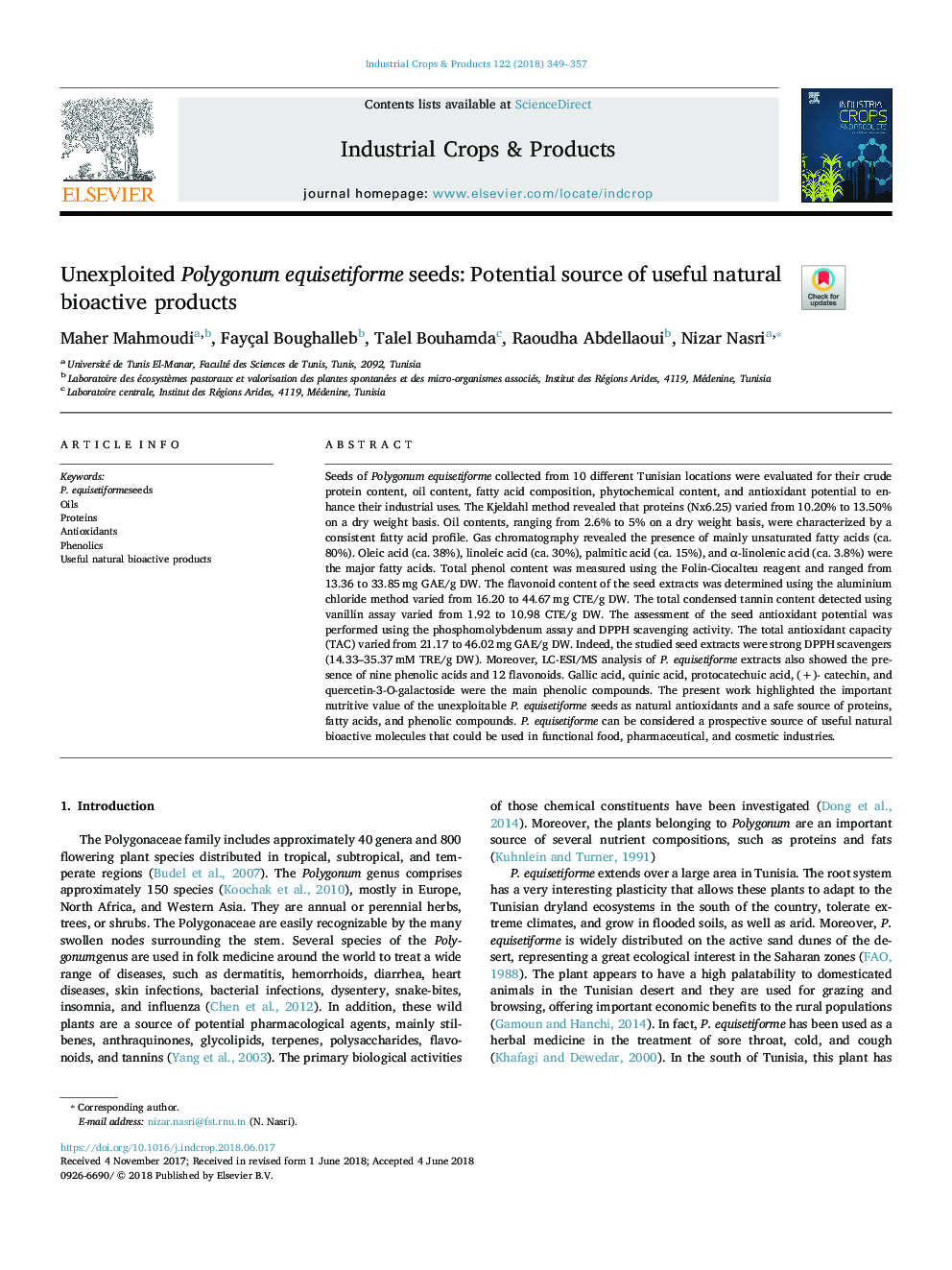| Article ID | Journal | Published Year | Pages | File Type |
|---|---|---|---|---|
| 8879652 | Industrial Crops and Products | 2018 | 9 Pages |
Abstract
Seeds of Polygonum equisetiforme collected from 10 different Tunisian locations were evaluated for their crude protein content, oil content, fatty acid composition, phytochemical content, and antioxidant potential to enhance their industrial uses. The Kjeldahl method revealed that proteins (Nx6.25) varied from 10.20% to 13.50% on a dry weight basis. Oil contents, ranging from 2.6% to 5% on a dry weight basis, were characterized by a consistent fatty acid profile. Gas chromatography revealed the presence of mainly unsaturated fatty acids (ca. 80%). Oleic acid (ca. 38%), linoleic acid (ca. 30%), palmitic acid (ca. 15%), and α-linolenic acid (ca. 3.8%) were the major fatty acids. Total phenol content was measured using the Folin-Ciocalteu reagent and ranged from 13.36 to 33.85â¯mg GAE/g DW. The flavonoid content of the seed extracts was determined using the aluminium chloride method varied from 16.20 to 44.67â¯mg CTE/g DW. The total condensed tannin content detected using vanillin assay varied from 1.92 to 10.98 CTE/g DW. The assessment of the seed antioxidant potential was performed using the phosphomolybdenum assay and DPPH scavenging activity. The total antioxidant capacity (TAC) varied from 21.17 to 46.02â¯mg GAE/g DW. Indeed, the studied seed extracts were strong DPPH scavengers (14.33-35.37â¯mM TRE/g DW). Moreover, LC-ESI/MS analysis of P. equisetiforme extracts also showed the presence of nine phenolic acids and 12 flavonoids. Gallic acid, quinic acid, protocatechuic acid, (+)- catechin, and quercetin-3-O-galactoside were the main phenolic compounds. The present work highlighted the important nutritive value of the unexploitable P. equisetiforme seeds as natural antioxidants and a safe source of proteins, fatty acids, and phenolic compounds. P. equisetiforme can be considered a prospective source of useful natural bioactive molecules that could be used in functional food, pharmaceutical, and cosmetic industries.
Keywords
Related Topics
Life Sciences
Agricultural and Biological Sciences
Agronomy and Crop Science
Authors
Maher Mahmoudi, Fayçal Boughalleb, Talel Bouhamda, Raoudha Abdellaoui, Nizar Nasri,
